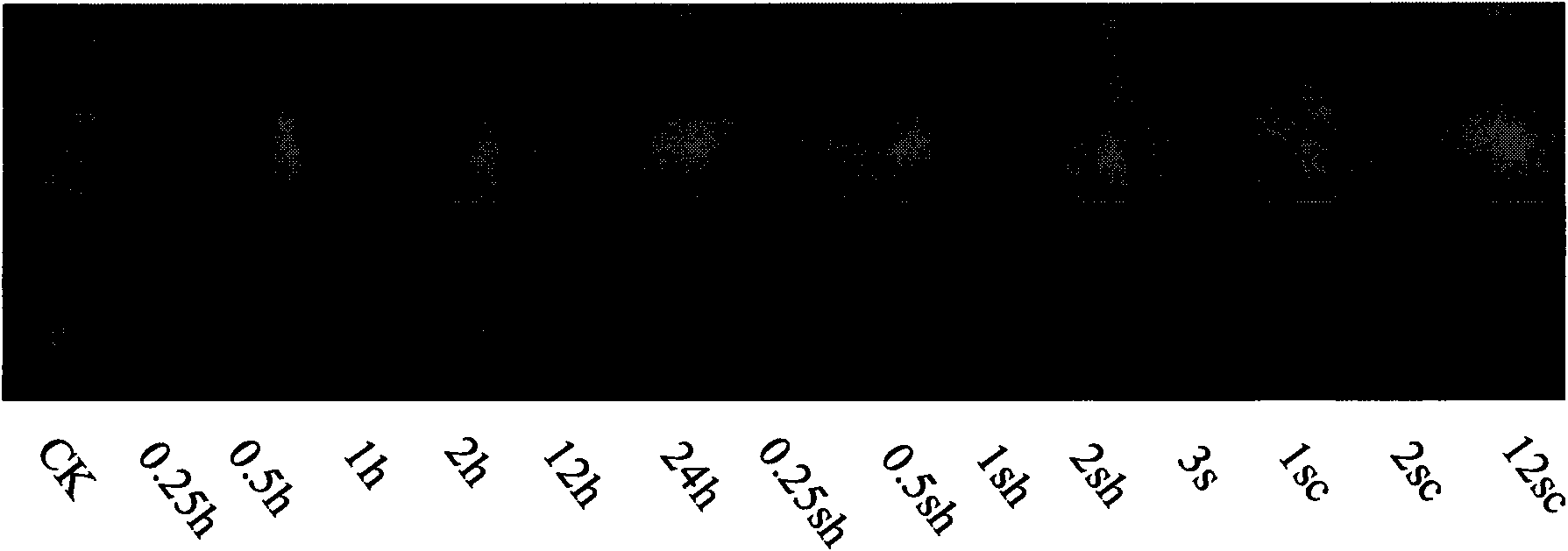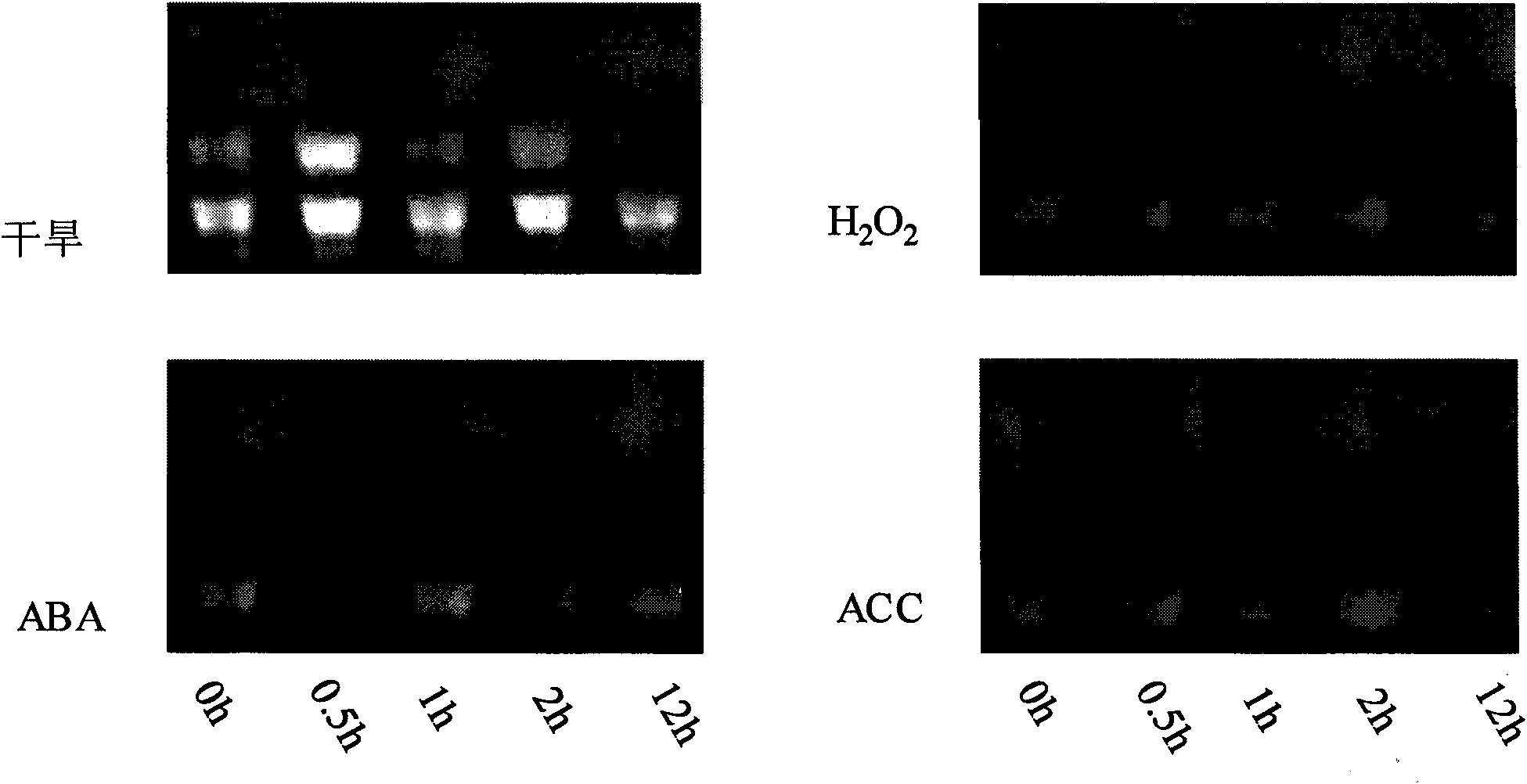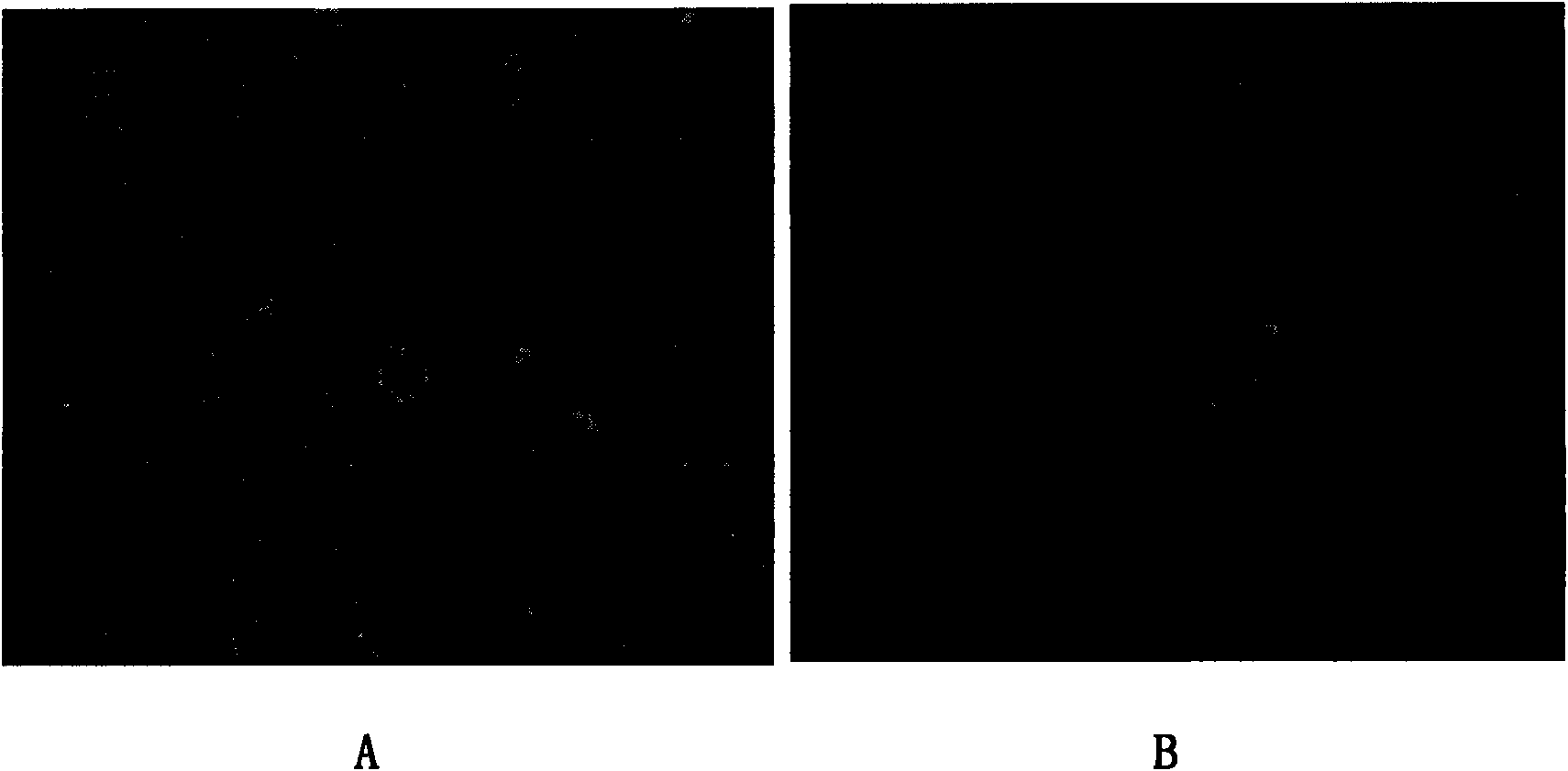Protein related to heat resistance property and coding gene and application thereof
A technology that encodes genes and proteins, used in applications, genetic engineering, plant genetic improvement, etc.
- Summary
- Abstract
- Description
- Claims
- Application Information
AI Technical Summary
Problems solved by technology
Method used
Image
Examples
Embodiment 1
[0038] Cloning of embodiment 1, TaMBF1c gene
[0039] (1) Electronic cloning of wheat TaMBF1c gene sequence
[0040] Take Affymetrix The sequence with the probe number Ta.12225.1.S1_x_at in the wheat Genome array was used as the basic sequence, and ORF finder analysis was performed on the NCBI (www.ncbi.nlm.nih.gov) website, and it was found that the sequence already contained a complete ORF sequence. This sequence was used as the basis for designing gene-specific primers.
[0041] (2) Cloning of cDNA and untranslated region sequence of wheat TaMBF1c gene
[0042] Primers were designed according to the sequence obtained by electronic cloning, and the primer pair used was TaMBF1c-1: 5'-AAGACAGAGGCGAGGAGAAG-3' and TaMBF 1c-2: 5'-ACCACAAAGCAACCCGAGA-3'.
[0043]The experimental material is a common wheat variety TAM107 (Triticum aestivum L), that is, 5 minutes, then rinsed with distilled water 3 times, and germinated at room temperature for 24 hours. The seeds with consisten...
Embodiment 2
[0048] Example 2, Induced expression pattern of TaMBF1c gene under high temperature stress
[0049] Wheat seedlings grown under normal conditions for ten days as described above were subjected to the following heat stress treatment: (1) directly treated at 40°C for 0.25, 0.5, 1, 2, 12 and 24 hours, respectively named as 0.25h, 0.5h, 1h, 2h, 12h and 24h; (2) 34℃ heat exercise for 3 hours and 40℃ high temperature treatment for 0.25, 0.5, 1 and 2 hours, respectively named 0.25sh, 0.5sh, 1sh and 2sh; (3) After 3 hours of heat exercise at 34°C, the growth resumed under normal conditions for 0, 1, 2 and 12 hours, which were named 3s, 1sc, 2sc and 12sc, respectively, and the material without any high temperature treatment was named ck. The treated leaves were taken, and RNA was extracted for Northern hybridization. Use the primer pair TaMBF1c-1: 5'-AAGACAGAGGCGAGGAGAAG-3' and TaMBF1c-3: 5'-CGGAGGCATTCTTGTTCGTC-3' to amplify the fragment of the TaMBF1c gene and recover it, and use th...
Embodiment 3
[0051] Example 3, Induced expression pattern of TaMBF1c gene under other stresses
[0052] With 20% PEG-6000, 250mM NaCl, oxidative stress (100μM H 2 o 2 ) treatment, and plant hormones ACC (200 μM), ABA (100 μM), and MeJA (100 μM) were used to treat wheat seedlings respectively, and wheat leaves with different treatment times were taken to extract RNA for Northern hybridization. The probes and labeling methods used were the same as above. The specific methods of coercion treatment are as follows:
[0053] High-salt treatment: Add NaCl solution to the culture flask to a final concentration of 250mM.
[0054] PEG treatment: add PEG-6000 solution to the culture flask to a final concentration of 20% (mass percentage).
[0055] ABA treatment: ABA (analytical grade, purchased from Sigma-aldrich) was dissolved in DMSO to make a 10 mM stock solution, and then added to the culture flask to a final concentration of 100 uM.
[0056] ACC treatment: Dissolve ACC in water to make 10mM ...
PUM
 Login to View More
Login to View More Abstract
Description
Claims
Application Information
 Login to View More
Login to View More - R&D
- Intellectual Property
- Life Sciences
- Materials
- Tech Scout
- Unparalleled Data Quality
- Higher Quality Content
- 60% Fewer Hallucinations
Browse by: Latest US Patents, China's latest patents, Technical Efficacy Thesaurus, Application Domain, Technology Topic, Popular Technical Reports.
© 2025 PatSnap. All rights reserved.Legal|Privacy policy|Modern Slavery Act Transparency Statement|Sitemap|About US| Contact US: help@patsnap.com



